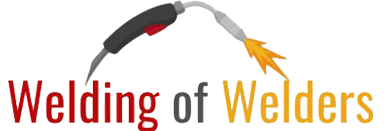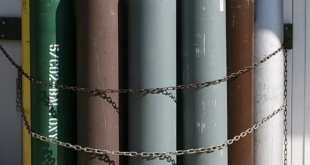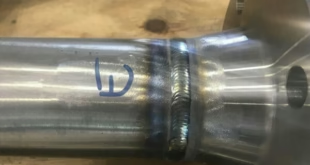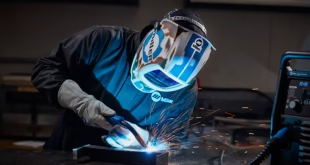AWS A5.4 Standards — Electrodes
Stainless steel welding demands consistency, corrosion resistance, and metallurgical control. The AWS A5.4 / A5.4M specification provides the industry’s official blueprint for covered stainless steel electrodes used in Shielded Metal Arc Welding (SMAW). From welding instructors and quality engineers to plant fabricators and inspectors, understanding this standard is essential.
A5.4 defines chemical composition, mechanical properties, classification rules, testing procedures, and marking requirements for stainless steel electrodes. If an electrode is labeled E308, E316, E309, or similar, it is A5.4 that defines exactly what that designation means.
What is AWS A5.4 / A5.4M?
AWS A5.4 is the American Welding Society’s specification controlling:
Stainless steel SMAW electrodes
Their deposited weld metal chemistry
Required mechanical test results
Ferrite range expectations
Manufacturing and packaging rules
Lot numbering and traceability requirements
The A5.4M counterpart uses SI units but follows the same rules.

Why A5.4 Matters
Stainless steel welds are sensitive to:
Hot cracking
Sensitization
Improper ferrite balance
Dilution during dissimilar metal welding
A5.4 prevents these issues by ensuring electrodes meet strict metallurgical criteria.
Understanding A5.4 Electrode Designations
Every A5.4 electrode follows the familiar pattern:
E XXX – XX
Where:
E = Electrode (SMAW rod)
XXX = Stainless steel alloy family (308, 309, 316, etc.)
XX = Coating type, welding position, and current compatibility
Examples
E308L-16 → Designed for 304L stainless steel, rutile coating, AC/DCEP
E316L-17 → Used for 316L stainless steel, modified rutile coating
E309L-16 → Ideal for welding stainless to carbon steel
Meaning of the Last Two Digits
| Suffix | Coating Type | Current | Notes |
|---|---|---|---|
| -15 | Lime-basic | DCEP | Deep penetration, structural |
| -16 | Rutile | AC/DCEP | Smooth arc, easy slag removal |
| -17 | Modified rutile | AC/DCEP | Cleaner arc, improved bead quality |
Common AWS A5.4 Stainless Steel Electrodes
1. E308 / E308L
For welding 304 / 304L stainless
“L” means low carbon (<0.04%)
Resistant to intergranular corrosion
2. E309 / E309L
For dissimilar metals, especially stainless to carbon steel
High Cr/Ni resists dilution
Also used for stainless cladding overlays
3. E316 / E316L
Contains molybdenum, providing exceptional pitting resistance
Ideal for marine, chemical, and chloride-rich services
4. E347
Niobium-stabilized
Ideal for high-temperature service
Prevents carbide precipitation during prolonged heating
Mechanical Property Requirements in A5.4
Each electrode type must meet specific tests:
Tensile Strength
Typically 70–85 ksi depending on classification.
Elongation
Minimum 30% for ductility.
Impact Toughness
Required for certain grades and critical applications.
Chemical Composition Requirements
A5.4 sets strict chemical windows for:
Cr (chromium): Provides corrosion resistance
Ni (nickel): Stabilizes austenite
Mo (molybdenum): Improves pitting resistance
C (carbon): Controlled to prevent sensitization
Nb/Ti: Stabilizers in special grades
Low-Carbon (“L”) Grades
Carbon <0.04%
Prevents carbide precipitation during exposure to 450–850°C.
Ferrite Number (FN)
Recommended range: FN 3–12
Ferrite prevents hot cracking in austenitic stainless welds.
Coating Types Under A5.4
Lime-Basic (-15)
Deep penetration
High cracking resistance
DCEP-only
Rutile (-16)
Easy operation
Smooth bead
Works with AC or DCEP
Modified Rutile (-17)
Very smooth arc
Cleaner weld appearance
Good for fabrication shops
Welding Positions and Current Compatibility
All-position: Usually -16 and -17 types
Flat/Vertical-up: Some -15 types
Current:
-15 → DCEP
-16/-17 → AC or DCEP
Applications of AWS A5.4 Electrodes
Petrochemical Plants
High-temperature stainless piping
Cracking-resistant welds
Food & Beverage Industry
Tanks
Stainless structural components
Sanitary tubing
Marine and Offshore
Saltwater corrosion resistance
316/316L widely used
Power Generation
Superheaters
Turbine components
Boiler stainless repairs
Advantages and Limitations of A5.4 Electrodes
Advantages
Excellent corrosion resistance
Reliable welding performance
Predictable metallurgical behavior
Controlled ferrite content reduces hot cracking
Limitations
Sensitive to moisture pickup
Lower deposition rate than MIG/TIG
Requires controlled heat input
Comparison with Similar AWS Standards
| Standard | Process | Purpose |
|---|---|---|
| AWS A5.4 | SMAW | Stick electrodes for stainless steel |
| AWS A5.9 | GTAW/GMAW | Stainless TIG/MIG filler metals |
| AWS A5.22 | FCAW | Stainless flux-cored wires |
Best Practices for Using A5.4 Electrodes
Storage
Store at 250°F (121°C)
If exposed to moisture, bake at 500–600°F (260–315°C)
Preheat and Inter-pass
Stainless usually needs little or no preheat
Control inter-pass temperature to prevent distortion and carbide precipitation
Arc Technique
Use a short arc
Avoid heavy weaving
Maintain controlled heat input
Comparison Table — E308L vs E309L vs E316L
| Electrode | Primary Alloy | Typical Use | Corrosion Resistance | Notes |
|---|---|---|---|---|
| E308L | 304/304L | General stainless structures | Good | Most common stainless electrode |
| E309L | Dissimilar metals | Stainless-to-carbon steel | Very good | High ferrite → crack resistant |
| E316L | 316/316L | Chloride and marine service | Excellent | Molybdenum prevents pitting |
FAQs
What does the “L” mean in stainless electrodes like E308L?
“L” indicates low carbon, preventing carbide precipitation and improving corrosion resistance.
Can I weld stainless to carbon steel with E308?
No. Use E309 or E309L, which are formulated for dissimilar welding.
What ferrite number (FN) is recommended?
Most stainless electrodes target FN 3–12 to avoid hot cracking.
Do all A5.4 electrodes work on AC?
Only -16 and -17 types.
-15 types require DCEP.
Why does E316 contain molybdenum?
Molybdenum provides excellent pitting and crevice corrosion resistance, especially in chloride environments.
Conclusion
AWS A5.4 is the authoritative standard governing stainless steel SMAW electrodes. It defines the chemical composition, mechanical performance, and classification rules that guarantee predictable, corrosion-resistant welds.
Whether welding food-grade tanks, petrochemical piping, boiler components, or marine structures, A5.4 electrodes—E308, E316, E309, E347, and others—remain essential for high-quality stainless steel fabrication. By understanding electrode selection, ferrite balance, coating types, and proper storage, welders and inspectors can ensure long-lasting weld integrity in any environment.
 Welding of Welders All about Welding and Welders
Welding of Welders All about Welding and Welders



